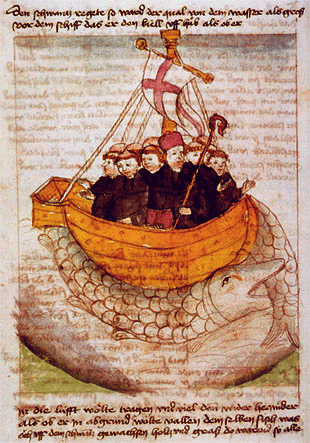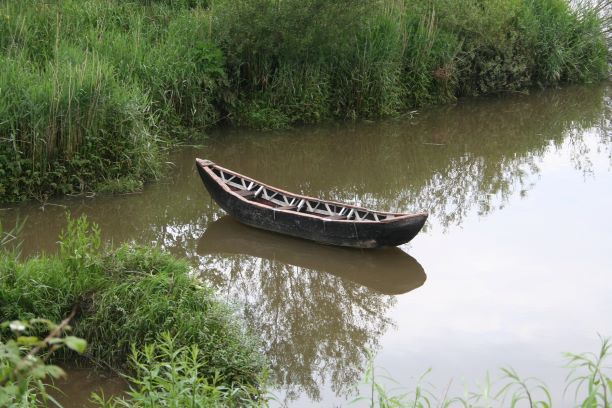A curragh is a type of boat. It is sometimes pronounced “KERR-ic” with a “c” or “k” sound at the end, and often spelled in English “currach”. But in other dialects, it is pronounced with more of a “g” ending, and often spelled as the pub, “curragh”.
A curragh is a wood boat unique to the west coast of Ireland, used on both Irish rivers and in the Atlantic. They are wood, lattice boats, usually made of ash. The design gives the boat some give so that it can take abuse, and bend not break. They have a shallow draft ideal for Irish rivers.
They have a curved-up bow, somewhat of a banana shape. This allows it to ride the waves in the ocean. But perhaps the most unique feature is the outer skin of the boat. It is encased in animal hides, stretched tight and stitched together, or sometimes sealed together with tar.

There are some subtle differences in curragh boats in the west, with differences in the boats of Donegal, Mayo, Galway, Clare and Kerry. But there are more similarities than differences. These boats were once very common in Ireland, and you could see dozens along any pier or waterway.
They are far less common now. Curraghs are still being built, the same way there were built centuries ago, with only one compromise. That is, the boats are encased in canvas rather than animal hides.
All curraghs are fitted with oars, but some have included a mast for sailing. With a sail, a curragh could certainly travel long distances across the ocean.
I know this to be true since an Irishman with a crew of a dozen or so sailed from Ireland to Iceland and Greenland, and eventually to Canada. He did this in the 6th Century – centuries before the Vikings and nearly a millennium before Christopher Columbus.

His name was Brendan and he was an Irish monk. He founded a monastery in Galway, and he and other monks sailed to various islands around Ireland and to the continent of Europe. They established missions wherever they went. For this he became known as Brendan the Navigator, and Brendan the Voyager.
When he was in his 70s, Brendan and over a dozen other monks sailed west. They were gone for seven years. The made it to, what Brendan called, “The Land of Promise of the Saints”.

The details of Brendan’s journey were written down several centuries later, in a work called “Brendan’s Voyage”. According to the text, Brendan met St. Patrick and Judas Iscariot in the Land of Promise. He also encountered sea monsters and talking birds. Most famously, he sailed on the back of a friendly whale, and the whale allowed him to conduct Easter mass on its back.
There is a risk, of course, that an account of an event, written several centuries after the event itself, may take a few liberties with the facts.
But we know as a fact that Brendan sailed from Ireland to North America and back again. How do we know?
Brendan later became a saint, and we all know that all accounts of the life of a saint must be true.
The Norse sagas also suggest that Irish monks had been to Iceland long before the Vikings settled there. There is also evidence that Viking knowledge of Irish voyages convinced them that there was land west of Ireland, and sparked the Vikings to sail to Iceland and North America.

You may wonder whether a curragh boat could even make such a journey. But in 1976, an explorer proved that it could. Tim Severin and four others crafted a curragh in the same way it would have been built in the 6th Century and sailed west from the Dingle Peninsula.
50 days later, they reached the shores of Newfoundland. It was not, by any means, an easy voyage but they did make the one-way trip.
I, for one, am convinced that St. Brendan sailed across the Atlantic in the 6th Century, and that he and his monks were the first Europeans to set foot in North America.
I am, though, a bit skeptical about the friendly whale.
